Slow Pleasure as the Antidote to Death Grip Syndrome

Table of Contents
Over time, in our fast-paced world, many of us have lost touch with what it means to feel and experience pleasure slowly. We’re conditioned to expect quick stimulation and instant arousal. The nervous system adapts accordingly, learning to respond only to intense input while tuning out everything else. The result is a growing disconnection from the subtler layers of sensation and embodied arousal.
For some, this disconnection goes even further. It begins to show up as what’s known as Death Grip Syndrome, a term originally used in men’s sexual health, but increasingly relevant to women’s experiences as well.
Death Grip Syndrome describes a state where the body becomes desensitized from repeated, high-friction or high-intensity stimulation. In men, this often means difficulty ejaculating or feeling pleasure during partnered sex after years of tight, fast masturbation. For women, it can look like a loss of vaginal sensitivity and a dependency on powerful vibrators just to feel anything. The body stops responding to touch that is slow or connected because it has adapted to expect something louder and more extreme.
What is Death Grip Syndrome?
Death Grip Syndrome is a term that originally came from men’s sexual health circles. It describes a pattern of masturbating with such a tight grip, and so much pressure, that the body stops responding to anything else. Over time, the penis becomes less sensitive. Partnered sex feels dull or frustrating, and erection and orgasm get harder to access unless the stimulation is intense and highly specific.
And what started as just “getting off” turns into something that makes real intimacy feel distant and difficult. Over time, this pattern messes with blood flow and nerve sensations and creates a kind of internal tension that builds into performance anxiety and even emotional distance in relationships.
And women are not exempt from this. Most women don’t use a tight grip, but we absolutely get caught in the same loop of overstimulation. For some, it’s constant vibrator use on the highest setting, until the body stops responding to anything slower or more subtle. For others, it’s pressure-based masturbation habits that skip over the slower buildup. Or relying on intense pornographic imagery just to stay aroused.
Why Intensity Shuts You Down & Minimizes Sexual Health
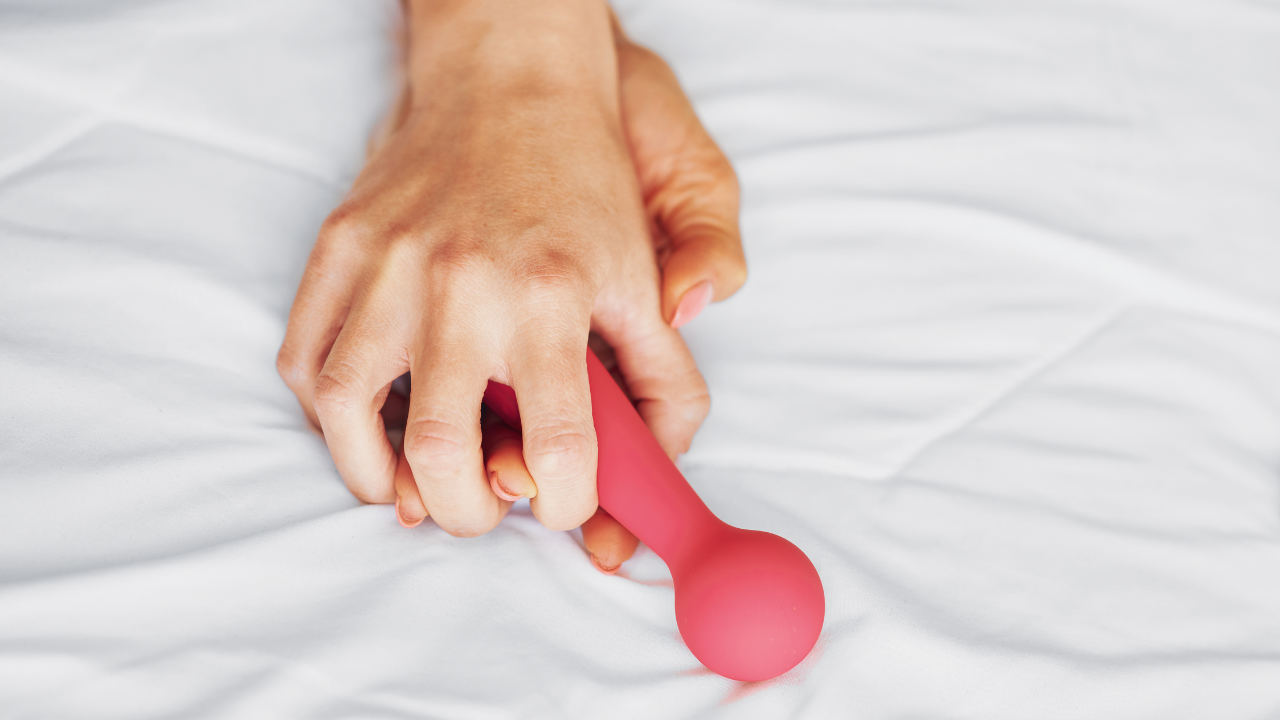
Nerve endings in the vulva, vagina, and cervix respond best when they receive slow movement and enough blood flow to stay alive with sensation. These areas thrive when touch feels unpredictable and when there’s room for variation.
Repetitive stimulation, especially from high-speed vibrators or pressure-based habits trains the nervous system to filter out everything that feels familiar. When the same sensation repeats over and over, the nerves stop translating it as important. This is called sensory adaptation, and it’s one reason why arousal may feel like it disappears mid-pleasure.
Over time, this kind of stimulation also changes how the body perceives touch. Light fingertips feel muted. Emotional connection becomes harder to register through physical contact. The body waits for intensity instead of responding to presence. What once felt exciting starts to feel mechanical or disconnected because the nervous system has adjusted to survive under pressure.
Blood flow plays a major role in this. The vaginal canal, vestibular bulbs, and cervix rely on consistent circulation to create tissue tone, natural lubrication, and responsive arousal. When blood reaches these tissues easily, they swell and come alive to sensation. But when the body is stuck in a high-alert state circulation narrows.
How Women Experience Death Grip Syndrome
Relying on vibrators for release
Many women use vibrators to self-soothe after long days or stress. The vibrator becomes a nightly ritual, a way to release tension quickly and fall asleep. The body links climax to the sensation of urgency. Over time, this creates a pattern where the nervous system only responds when intensity is high and focused.
Skipping arousal and going straight to climax
Reaching for a vibrator often skips the build-up of arousal. There is no time for the body to swell or breathe into desire. The nervous system shifts into a loop where climax is accessed through a quick surge of sensation rather than through the gradual rise of pleasure. This trains the pelvic nerves to look for that same pattern each time.
Creating a fixed pattern of stimulation
When the same pressure and position are used over and over, the body adapts to it. The clitoris begins to expect a specific rhythm. The vaginal canal no longer receives varied contact. Sensation becomes localized, and pleasure stops spreading. The nervous system begins to disengage from anything that falls outside the learned pattern.
Experiencing emotional disconnection during sex
Many women describe a sense of separation between their body and their awareness during intimacy. Movements happen, but sensation feels distant. The mind stays active, but the pelvic space feels muted. Penetration may feel dull or emotionally vacant.
Absorbing cultural messages about sex without internal guidance
Messages about pleasure and sexual availability circulate constantly. But few women are taught how to track sensation or explore arousal at their own pace. Without inner guidance, many women rely on external techniques or tools to reach climax. The deeper intelligence of the body becomes quiet, and over time, this contributes to numbness because the pathway to pleasure feels outsourced.
The Solution: Slow Pleasure & Intentional Touch

Slowness works because it directly activates the parasympathetic branch of your autonomic nervous system. This is the branch responsible for rest, digestion, arousal, and tissue repair. When touch is slow and non-threatening, the body moves out of sympathetic dominance (fight, flight, freeze) and into a state where blood flow redistributes toward internal organs and genital tissue.
With adequate circulation, the vaginal lining thickens, lubrication production ramps up, and the vestibular bulbs, erectile tissue located beneath the outer lips begin to engorge. These are all foundational physiological steps required for the body to access full sexual arousal.
Fast or friction-heavy stimulation triggers a very different physiological sequence. The body shifts into goal-focused, sympathetic activation. The internal tissue of the pelvic bowl receives reduced circulation, limiting the body’s ability to produce natural lubrication or sustain arousal over time. Repetitive input from high-frequency vibration or pressure causes mechanoreceptors in the skin and mucosal lining to adapt. They stop sending signals to the brain as often, especially if there is no change in pressure, rhythm, or location. This process, called sensory adaptation, is how numbness begins at the neurological level.
Crystal Pleasure Wands For Slow Pleasure
Crystal wands intervene at the level of both circulation and sensory input. Because they are firm and temperature-conductive, they allow for static pressure that increases vascular response without overwhelming the mechanoreceptors. The application of slow, stationary pressure to specific areas of the vaginal canal activates deep pressure receptors, the Pacinian corpuscles and Ruffini endings.
When you hold the wand at the anterior vaginal wall (A-spot), it compresses the urethral sponge. This stimulates blood flow to the Skene’s glands and surrounding erectile tissue. When held against the posterior wall, the wand compresses the perineal body and the rectovaginal fascia, both of which contain high concentrations of connective tissue and nerve endings. These areas often hold tension that restricts blood flow and dampens nerve conductivity. Applying pressure here helps release fascial restriction and restore circulation, which supports nerve repair and reactivation.
Yoni Eggs
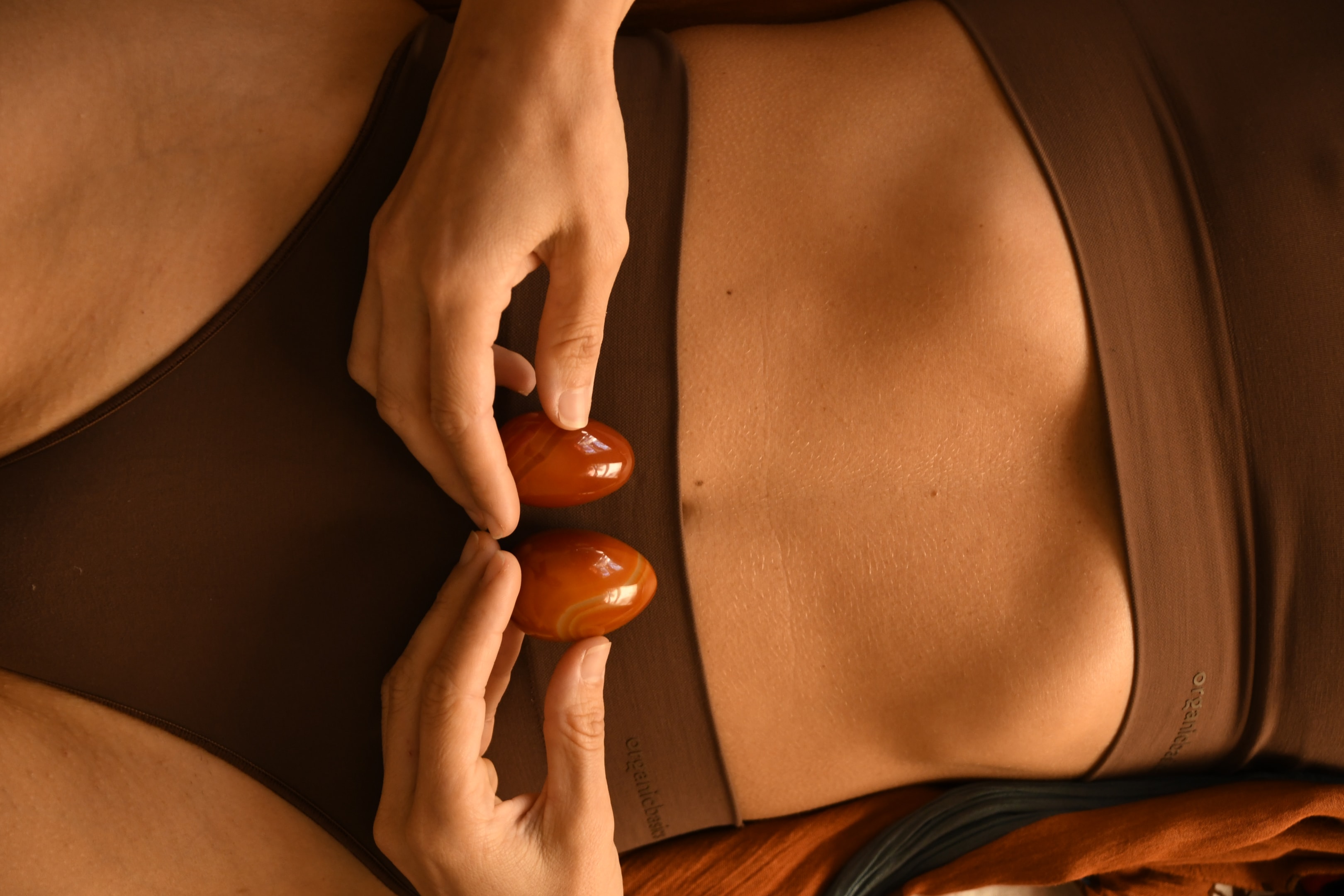
Yoni eggs work through sustained isometric activation. When inserted, the vaginal walls maintain subtle contraction to support the egg’s presence. This activates the pubococcygeus (PC) and iliococcygeus muscles, two of the primary muscles in the pelvic floor. These muscles wrap around the vaginal opening and mid-canal and are directly involved in the ability to generate sensation and support the internal structure of the reproductive system. Over time, repeated engagement of these muscles through egg retention enhances nerve firing rates and restores proprioception, your brain’s awareness of what’s happening inside your vaginal canal.
What to Expect During Recovery
Low sensation during early touch
In the first week or two, the vaginal walls may feel unresponsive to gentle pressure. This is due to sensory adaptation. When the same intense stimulation is used repeatedly, like a vibrator in one position, the sensory nerves stop sending detailed messages to the brain. Without pressure variation, the mechanoreceptors that detect stretch and contact go dormant. Early in recovery, these nerves need repeated, low-pressure input to begin firing again.
Sharp or pulsing feedback in specific areas
As nerve endings begin to recover, certain zones in the vaginal canal may respond with distinct sensations. These might feel like brief pulses or sudden surges in localized regions. This happens when deeper pressure receptors begin transmitting again after long inactivity. These sensations reflect blood returning to underused tissue and synapses re-establishing their feedback loops. This is especially common when using a pleasure wand wand to compress the G-spot or posterior wall for several seconds at a time.
Physical stimulation triggering emotional release
Applying sustained pressure to the cervix or deep vaginal wall can activate the vagus nerve through its pelvic branches. The vagus sends input directly to the hypothalamus and limbic system, which store emotion-related signals. When pelvic tissues receive blood flow and nerve signaling after a long period of disconnection, the nervous system may release stored responses.
Return of genital arousal without touch
You may notice swelling in the labia, increased lubrication, or warmth in the vaginal canal at unexpected moments. This is the result of nitric oxide release and improved vascular tone in the erectile tissues. As blood flow returns to the vestibular bulbs and internal clitoral network, these tissues begin to self-engorge more easily.
Responsiveness to new forms of touch
When pressure is varied and rhythm slows down, the sensory nerves become more active. You may notice that slow lateral movement across the vaginal wall produces stronger feedback than before. You may begin to detect the difference between pressing into the anterior wall and the side walls. This means the somatosensory cortex is updating its map of your pelvic region. As your brain receives more specific input, it begins to assign distinct value to those signals, which increases sensation and arousal potential.
FAQ
Death grip syndrome is often identified by a pattern of reduced penile or vaginal sensitivity and difficulty achieving orgasm during partnered sex, despite being able to climax easily during solo masturbation. The most common early signs include delayed ejaculation or orgasm, numbness, or a noticeable gap between sensation during penetrative sex versus manual stimulation. Some men experience erectile dysfunction, decreased sensitivity, or a growing reliance on intense grip styles to feel any form of sexual pleasure.
Health professionals and sex therapists report that these symptoms often stem from frequent masturbation using an overly tight grip or intense pressure. Over time, this creates nerve fatigue, poor blood flow, and a decrease in nerve function, especially in the peripheral nerves responsible for arousal. While death grip syndrome does not appear in official medical literature, it has been widely acknowledged by sex columnist Dan Savage and numerous healthcare providers due to its real-world impact on sexual health and relationship issues.
To fix death grip syndrome, the first step is adjusting your masturbation habits. This includes switching from a tight grip to a lighter grip and exploring more subtle sensations during arousal. Slowing down and using a light touch trains the nervous system to respond to less aggressive forms of sexual stimulation, helping the body regain sensitivity over time.
Reducing the frequency of masturbation, taking a short recovery period, and focusing on regular sexual intercourse, or mutual touch when a partner is present, can also help reverse death grip syndrome. These changes give the body time to restore healthy blood flow, reduce nerve damage, and re-establish normal erectile function.
Some men notice improvements within a few weeks, though recovery varies depending on how long the death grip pattern has been in place. If symptoms continue or worsen, seeking professional advice from a sex therapist or healthcare provider is recommended, especially if there’s penile pain, trouble climaxing, or suspected hormonal health issues, nerve damage, or side effects from certain medications. While this doesn’t constitute medical advice, these changes support a healthier, more enjoyable sensation during sexual activity.
Yes. While the term death grip syndrome originated in men’s health, many sex therapists and health professionals now acknowledge that women experience a similar pattern. The female equivalent typically involves reduced sensitivity, genital numbness, or difficulty achieving orgasm especially during partnered sex or penetrative sex.
This often develops from frequent masturbation using repetitive pressure with high-powered vibrators or a reliance on specific stimulation patterns. Over time, the peripheral nerves in the vulva and vaginal walls begin to reduce nerve function in response to continual pressure. Just like with men, this creates a vicious cycle: stronger stimulation is needed to feel anything, yet that same stimulation increases reduced sensitivity.
Women recovering from this pattern often benefit from switching to slower, less intense stimulation, using tools like crystal wands or yoni eggs to rebuild nerve function and blood flow. Many notice increased ability to respond to subtle sensations and a more fulfilling sex life after a short recovery period.
The name death grip refers to the excessive pressure used during solo masturbation, often an overly tight grip that compresses the penis or vaginal area more than what is typical during penetrative sex. This unnatural grip style applies continual force, leading to reduced penile sensitivity, delayed ejaculation, and other forms of sexual dysfunction in men and women.
Although the term death grip syndrome does not appear in formal medical literature, it has been popularized by communities discussing sexual performance issues, and validated by sex columnist Dan Savage. The word "death" describes how the tight grip effectively “kills” normal nerve function and pleasure signals over time, creating long-term consequences for sexual activity.
This term has stuck because it captures the intensity of the grip styles that lead to the problem, and the seriousness of the unintended negative consequences that follow. Many men or women who experience it describe feeling disconnected from their sexual pleasure, and frustrated by how hard it becomes to enjoy partnered sex without returning to the same discrete solo session habits that created the issue in the first place.





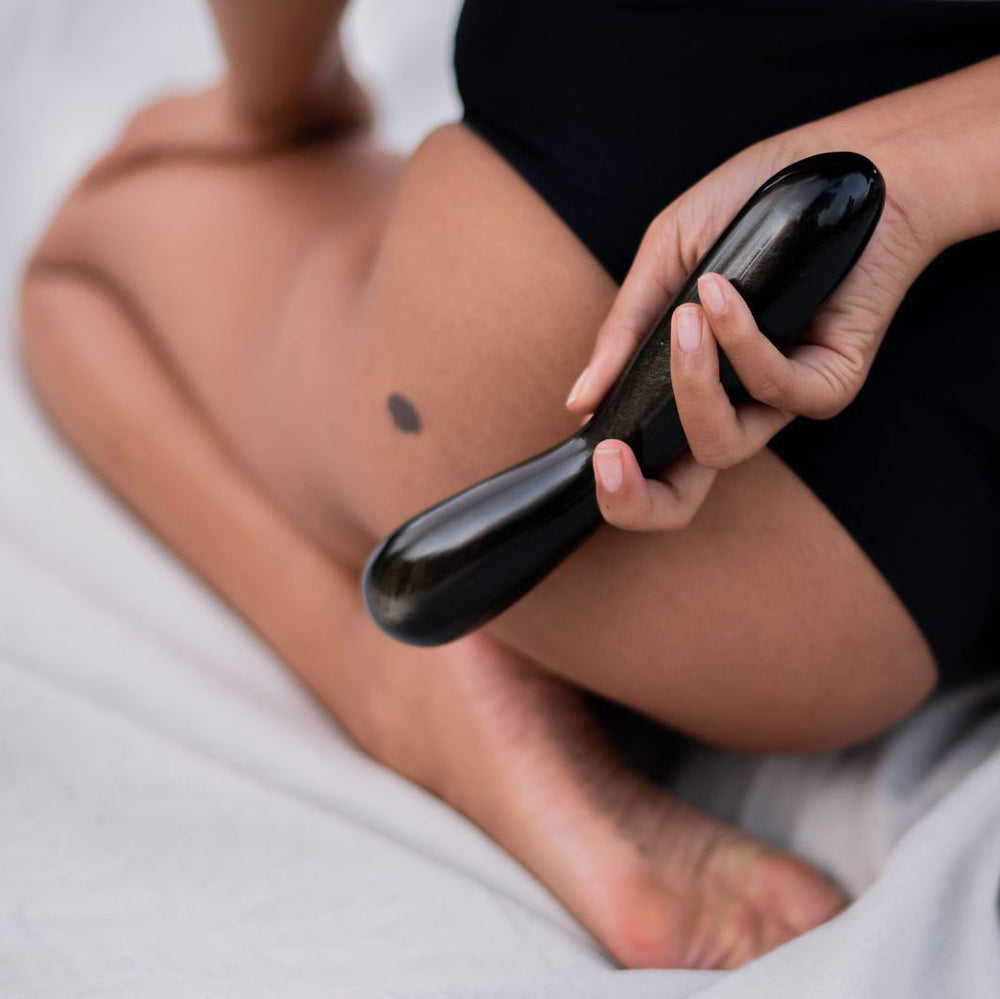





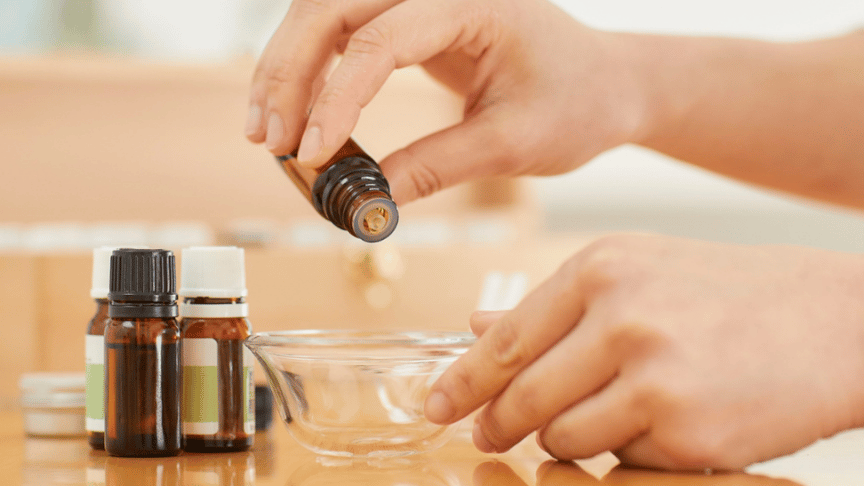

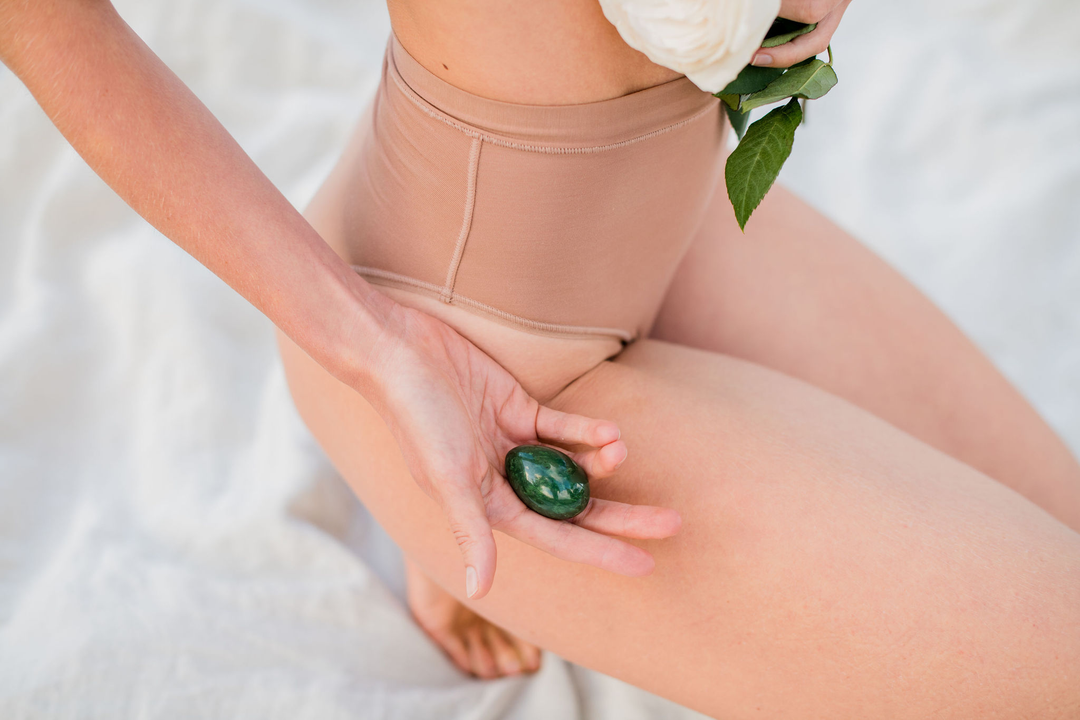


Leave a comment